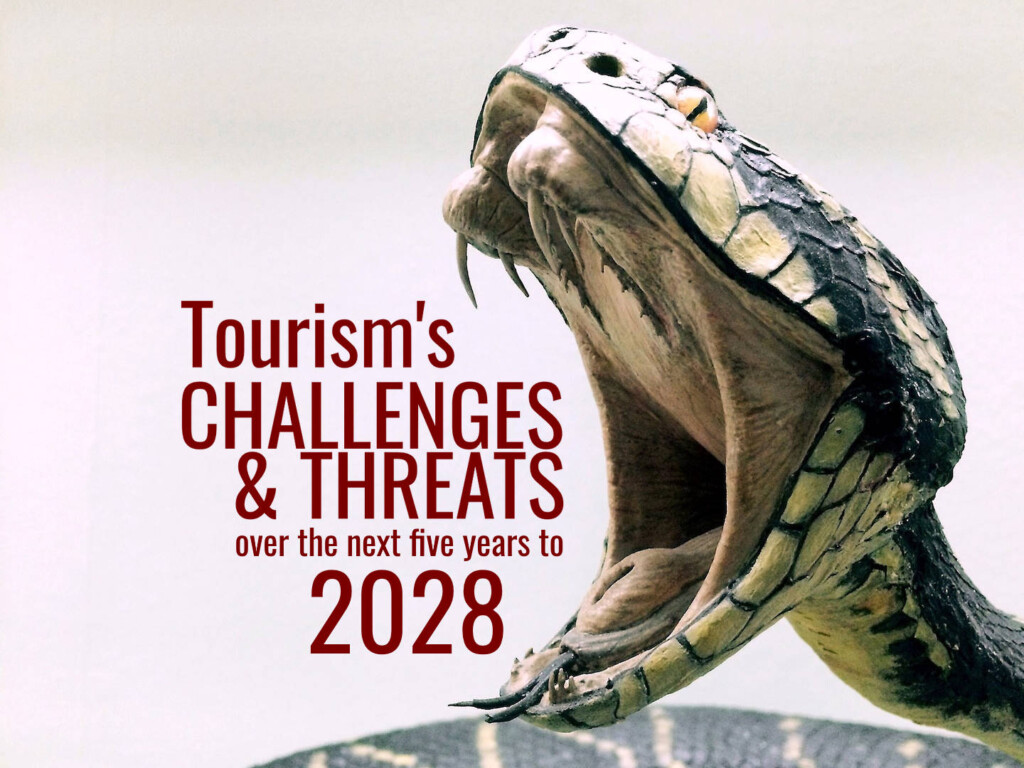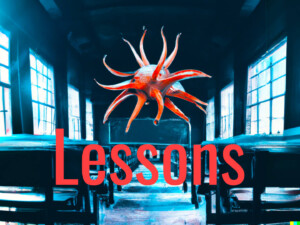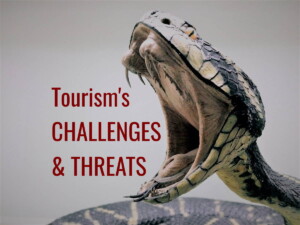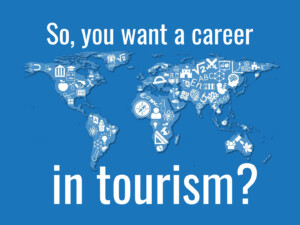What are tourism’s biggest challenges & threats over the next five years to 2028?

Over the next five years, what is the single biggest challenge or threat facing tourism where you work, or that you have identified through your research and study?
And what are the key strategies that your organisation, destination, or the industry at large should employ to overcome it?
It’s a “Good Tourism” Insight Bites question.
Your correspondent put the question to a range of travel & tourism stakeholders — “GT” Insight authors, “GT” Partners, and their invitees — and invited emailed written responses of no more than 300 words.
Bites menu
- Climate complacency
- In Rwanda: Economic, environmental, and regional instability
- In Hainan, China: The loss of a ‘flagship species’
- Another global pandemic
- In New Hampshire, USA: Workforce shortages
- In Barcelona, Spain: Capacity management
- Climate transformations
- Climate adaptations
- Forgettable experiences
- In Bhutan: Maintaining Gross National Happiness
- Travel & tourism access for all
- Adapting to uncertainty
- Climate action is on us
- What do you think?
- Featured image (top of post)
- Previous “GT” Insight Bites
Climate complacency
Geoffrey Lipman, Creative Disruption Architect, SUNx Malta
The biggest threat to travel & tourism is if we go soft on the Code Red Climate Crisis and continue to do business as usual.
The threat is real given the loads of ‘2050 Net Zero’ public relations-driven kick-the-can-down-the-road promises generated by the alphabet organisations that lead the complacency, and which is amplified by the media.
At SUNx — Strong Universal Network, and SUNx Malta, this is what we are doing about it:
- Building a global plan for #ClimateFriendlyTravel (#CFT), which is aligned with Paris 1.5 targets, is SDG-linked, and is nature-positive;
- Launching CFT chapters, mostly in the least-developed countries and small island states;
- Training CFT chapter leaders through our postgraduate CFT Diploma with ITS Malta;
- Profiling CFT companies through our CFT Registry;
- Supporting CFT companies through our CFT Club;
- Advocating CFT education to action for peaking GHG emissions by 2025, advancing climate justice, and training and mentoring 100,000 Strong Champions by 2030;
- Being a loyal and active “Good Tourism” Partner for focused outreach that can change minds.
[Ed’s note: SUNx is a valued “GT” Partner. Whatever your views on tourism and climate change, you too can be a “Good Tourism” Partner. “GT” is an impartial platform for insights, ideas, perspectives, and opinions about tourism that are shared in good faith.]
In Rwanda: Economic, environmental, and regional instability
Greg Bakunzi, Founder, Red Rocks Initiative for Sustainable Development & Red Rocks Rwanda
We at Red Rocks anticipate that the Rwandan tourism industry will be affected due to the economic uncertainties that will impact travel patterns and spending on tourism.
Another issue is the balancing of tourism growth with environmental conservation which is a permanent challenge, thus we intend to continue to promote sustainable tourism practices to preserve Rwanda’s natural beauty and biodiversity.
Last but not least, a threat to tourism in Rwanda is the political instability in DRC Congo, which, if not resolved will create security concerns and affect potential visitors’ perceptions of safety.
To help address and mitigate these threats and challenges we continuously monitor our tourism industry and undertake strategic planning in collaboration with our stakeholders and partners.
[Red Rocks is a valued “GT” Partner.]
In Hainan, China: The loss of a ‘flagship species’
Yana Wengel, Associate Professor, Hainan University — Arizona State University Joint International Tourism College, China
The biodiversity crisis refers to a global decline in the variety and abundance of species, ecosystems, and genetic diversity. This crisis has far-reaching consequences for the planet’s health, ecosystems, and humans. In terms of tourism, biodiversity is often what draws tourists to a destination.
Increasingly, scholars are exploring how travel can foster well-being. In the post-COVID era we evidence that people desire to travel to nature-based destinations as these environments are recognised for their ability to facilitate well-being through immersive experiences with biodiversity.
During our fieldwork on visitor experience in the Hainan Tropical Rainforest National Park, we realised that despite conservation laws and policies, there is a gap in conservation education. Most tourists and locals were unaware of the flagship species, Hainan gibbons (Nomascus hainanus).
While China rolls out an ambitious plan to establish the world’s largest network of national parks, Hainan Tropical Rainforest National Park is home to the world’s most endangered primate, and perhaps mammal, with only 36 individuals remaining.
Our research findings emphasise the importance of integrating awareness-raising and education initiatives into broader conservation plans. Such measures are necessary, not only in the case of the Hainan gibbon. It is imperative for policymakers to prioritise and implement comprehensive awareness-raising programmes.
In tourism, this insight emphasises the need for sustainable tourism practices that allow engaging both domestic tourists and local residents through education initiatives that can contribute to fostering a sense of responsibility and stewardship towards the Hainan gibbon and its habitat.
By integrating conservation education into the visitor experience, the tourism industry can play a pivotal role in ensuring the long-term survival of this critically endangered species and the overall biodiversity of the region.
Another global pandemic
Steve Noakes, Chair, Binna Burra Lodge; Founder, Pacific Asia Tourism; Chair, Ecolodges Indonesia
If you have a positive attitude, there will be more opportunities than threats in the travel & tourism indsutry, but since you asked about the single biggest challenge or threat, I’d say it was another global pandemic.
The COVID-19 induced shutdown was about as bad as things could get for the global travel & tourism industry.
The World Health Organization keeps a list of viruses and bacteria with pandemic potential. There are plenty that keep epidemiologists up at night, each of which could become another “Public Health Emergency of International Concern (PHEIC)”.
The best key strategies here are to listen to the science and the public health officials when it comes to workplace practices that reduce the transfer of diseases.
And, should a virus-induced slowdown or shutdown come along, be sure to have plenty of cash on hand. Cash remains king!
In New Hampshire, USA: Workforce shortages
Jada Lindblom, community and economic development field specialist, University of New Hampshire Cooperative Extension, USA
In New Hampshire, USA, workforce shortages continue to be a dominant concern for tourism. While not unique to our state, shortages are acutely felt here, as we have one of the oldest median age populations in the country.
In the summertime, tourism and hospitality businesses can leverage student workers, but these employees return to school before the fall foliage or winter ski seasons.
Many resorts succeed in bringing in international workers, but this remedy is limited by another critical challenge: the availability of local, affordable housing, an issue that is inseparable from workforce development.
Many young people want to live (or return) here, but costs can feel prohibitive. Based on statewide data, an annual household income of USD62,109 is required to afford a two-bedroom rental home. This figure rises in many destination communities.
How have tourism businesses in New Hampshire managed to get by?
Many are simply running short-staffed at all times. It’s their “new normal”. For some hospitality and retail businesses, older and semi-retired people have filled crucial staffing gaps. Some larger resorts have purchased off-site properties, such as old motels, to use for employee housing.
Many select boards, city councils, and regional planning commissions are giving serious thought to limiting short-term rentals. However, in a state known for its “Live Free or Die” motto, property owners often oppose restrictions.
One ground-up approach is to build the workforce of skilled young people who want to work in these industries and encourage employers to increase wages and year-round job security, reducing costly turnover.
New Hampshire is becoming a nationwide leader in high school career and technical education programs focused on outdoor recreation, a key tourism draw. As awareness of these career paths increase and wages improve, the tourism workforce will hopefully find more solid footing in the Granite State.
In Barcelona, Spain: Capacity management
Saverio Francesco Bertolucci, Commercial Assistant, VDB Luxury Properties, Spain
From what I can see, based on my academic and professional career to date, the main problem arising is related to capacity management for both destinations and hospitality companies.
Better and quicker transportation links and the rapid tourism boom after the pandemic are already leading to a point close to saturation in some places. Things will only deteriorate.
Therefore, there is a need to focus on customer targets. And clear rules and appropriate pricing and local taxation will play a pivotal role in addressing any capacity issues in the current experiential tourism economy.
Climate transformations
Kevin Phun, Founder & Director, The Centre for Responsible Tourism Singapore
As I draft this article, COP 28 is underway, touted as potentially the most pivotal one. This period could mark the onset of increased climate actions in tourism.
Tourism is changing quicker than ever this past half a century. The numbers of travellers we will see over the next few decades could be considered a threat because we may not be able to cope with the sheer weight of their impacts.
Climate change is reshaping how we travel, presenting a significant challenge. As the way we travel changes, the way we feel or perceive how tourism works also changes.
One of the biggest challenges is the stubborn way some of us still perceive travel & tourism. We need to discard some outdated views and perceptions of how the tourism industry works and the nature of travel.
The climate threat tourism faces is going to get fiercer, with destinations facing extinction, cultures in danger of being lost, and populations of people dwindling. Tourism has to learn to reduce this threat by being different from the past.
For example, as heritage sites are being damaged by warming temperatures and rising seas, we need appropriate technologies and skills to counteract these threats.
Training our people must radically change too, as what we are preparing people for could be outdated. We need to build more resilience for times of crises. The lack of understanding about necessary skills in the industry resembles a crisis in itself.
Technological changes must facilitate the industry’s transformation, with a shift in focus toward technologies that help destinations address the challenge, rather than serve consumers and commerce.
[The Centre for Responsible Tourism Singapore is a valued “GT” Partner.]
Climate adaptations
Duncan M Simpson, Writer, Simply Hostels and Light travels, UK
Studying history has shown me how tourism has faced dramatic change in the past. Shorter working hours, holidays with pay, and better travel infrastructure, among many other factors, brought more people into tourism.
Three figures, often thought of as the fathers of modern tourism in Britain, led tourism’s adaptation to those circumstances:
- Thomas Cook brought into being the package holiday;
- TA Leonard led the co-operative holidays movement so that people on low incomes could enjoy holidays, bringing about hostels and backpacking; and
- Billy Butlin’s camps introduced holidays as entertainment and experience.
Those changes were beneficial. Tourism has been a positive force for both personal and economic development.
Today we face equally dramatic challenges from climate change. But the challenge for the industry is not to mitigate the impacts of climate change. Tourism needs to adapt to a new world in the way that it adapted in the past.
A key strategy for the industry at large has to be to create fresh opportunities for new initiatives and to develop new ideas.
How will we still have tourism in a world of uncertainty? How can we have a tourism that does not create an imbalance in the distribution of resources?
These questions are searching for answers today. We require the practical visions of people like Cook, Butlin, and Leonard.
With good leadership and partnerships tourism can develop in new and imaginative ways. That might mean shifting from international to domestic, regional, and local. It might mean shifting to low carbon travel and slow ways with opportunities for better health and well-being.
Whatever it needs will require new visions from a new generation.
Forgettable experiences
Ed Jackiewicz, Professor, California State University, Northridge, USA
In writing this essay on the threats and challenges to tourism and the tourist industry in the next five years, I started by thinking about why people travel.
Clearly, escapism and breaking routines are important elements, but in an ideal sense people want to learn, experience a different culture and way of living, and expand a worldview.
Has our increasing reliance on technology altered these experiences in not-so-positive ways?
The role of technology in travel — the ability to plan out every move from where and when to travel, where to stay and eat, and what sites to visit — are minimising the freedom of choice and the likelihood of random occurrences. No longer does one have to ask someone for advice on the best local restaurant, for example.
An experience that comes to mind is a visit to the Caribbean for an academic conference some 20 years ago. The event organisers recommended an all-inclusive resort in a remote part of the island. While it was very nice, it was not how I had hoped to explore the island. I promptly relocated to a more central and locally-owned hotel.
En route to the conference one morning, I asked the cabbie to take me to a breakfast spot where locals go. He joined me for a meal in a small shack where we enjoyed tasty fish sandwiches. I spent an hour chatting with several locals and learned more about their culture then than I did in the entire week.
It was 20 years ago but I still remember that meal vividly, more than anything else on that trip. Had I stayed in the resort, taken shuttles, and interacted with only conference attendees and resort workers, the experience is likely to have been entirely forgettable.
In Bhutan: Maintaining Gross National Happiness
Dorji Dhradhul, Director-General, Department of Tourism, Bhutan
One of the primary challenges facing tourism in Bhutan is resisting pressure to move away from our time-tested tourism policy and practice known by the slogan “High Value Low Volume”. This seeks a delicate balance between preserving the country’s Gross National Happiness (GNH) and meeting the increasing demand for tourism. It is a cautious approach that safeguards Bhutan’s pristine environment and cultural identity.
However, demand for more visitors poses a threat to the values that make Bhutan an extraordinary destination. Risks lie in the potential degradation of sacred sites, natural landscapes, and traditional practices as tourists flock to experience the Kingdom.
Striking a harmonious balance between economic benefits derived from tourism and the need for conservation is crucial to safeguard Bhutan’s identity.
To address this challenge, a multi-faceted strategy is essential:
- Responsible tourism practices. There should be a perfect harmony between the Royal Government, citizens, and tourism service providers who must collaborate to establish and enforce stringent guidelines that prioritise environmental and cultural preservation.
- Community engagement. Empowering local communities to participate in tourism can foster a sense of ownership and responsibility. This can be achieved through community-based tourism initiatives, where locals are involved in showcasing their culture and traditions in a sustainable manner. This will be strengthened by elevating Bhutanese citizens to be the key stakeholders in tourism. The tour operators, hotels, guides, transporters, et cetera, who were once labelled ‘stakeholders’, are now ‘service providers’.
- Educational and awareness programs. Visitors should be informed about the cultural sensitivities and environmental concerns unique to Bhutan, encouraging them to be respectful and conscientious travellers.
In conclusion, the challenge for Bhutan tourism is maintaining its delicate equilibrium between growth and preservation. Through responsible practices, community involvement, and education, tourism can continue to contribute positively to Bhutan’s GNH.
Travel & tourism access for all
Neha Arora, Founder, Planet Abled, India
If we ignore those with disabilities, how can we talk about sustainable tourism? How can tourism be sustainable if we leave 15% of the population behind?
Most relevant conversations are around wheelchair accessibility. But wheelchair users are just 10 – 12% of the disabled population. Many others have invisible disabilities. Their accessibility requirements are different. As much as it is important to offer wheelchair access, it is equally important to include others.
Disability laws exist in most countries but implementation varies depending on where you are. Some countries are much better than others but there is still scope for improvement even in those. And it is almost always due to legal compliance rather than an enlightened customer-centricity.
Another problem is that people who claim to work in ‘accessible tourism’ also have a very narrow view. I cannot count how many times I have disagreed with people who do not want to look beyond the most visible disabilities. They have no motivation to learn about the challenges faced by others.
We need to speed up access for all. If we focus on advocating for only one disability at a time we won’t make it in our lifetime. And let’s not forget that people often acquire more than one disability during their lives. As we age, frailty affects us all.
What can we do to change?
- Accessibility by design. Ask: “Who am I excluding?”
- Advocate for a global framework of best practices that organisations implement voluntarily, not for compliance’ sake, and which mainstreams accessibility, creates healthy competition for that market, and leads to economies of scale.
- Ensure that information, communication, and digital platforms are accessible.
- Make planning and booking travel, as well as travel itself, simpler.
At Planet Abled we are now onboarding those who wish to join us in this journey.
Adapting to uncertainty
K Michael Haywood, Professor Emeritus, University of Guelph, Canada
The vast and diverse agglomeration of visitor-serving enterprises thrive when firmly ensconced within their circle of competence; when their operating environments remain stable. But that’s not the situation now, nor will it be over the next few years.
The ‘great resignation’ has not been resolved. Wages remain stagnant. Labour unions are getting agitated.
It is inevitable that hosting and the art of hospitality will remain compromised until more operators improve their circle of competence when it comes to talent; perhaps recognising new roles for affordable, smart technologies.
But that’s barely half of it. Having survived the pandemic, when so many succumbed to bankruptcy, the intense inflationary pressures of today are adding to operators’ woes. Costs in all areas have skyrocketed. Meanwhile, their customers are facing sticker shock too and are foregoing unnecessary expenditures.
With the costs associated with travel & tourism up, many small-to-medium-enterprises are in financial stress and flummoxed as to how to regain their time-sensitive, competitive, and cooperative edge. Unable to escape current upheavals and hostilities in the world, everyone seems caught between a rock and a hard place; struggling to keep their advantages alive, meaningful, and relevant.
Many are aware that they have no choice but to entertain cutbacks that hopefully won’t jeopardise the quality of what they offer. Sure, some well-financed corporate operators can and will refine their business models and refresh their brands. For most, though, escaping the peripheries of incompetence isn’t simple.
It’s no longer about becoming leaner and meaner. Rather it’s a matter that demands the involvement of entire communities-as-destinations; local tourism clusters organised and mobilised into collaborative action; discovering new ways to leverage resources; extending the boundaries of imagination; and revitalising the core competencies necessary for the entire cluster’s thrive-ability into the future.
Climate action is on us
Herb Hiller, Writer & Publisher, The Climate Traveler, USA
The rictus self-satisfaction that accompanied the outcomes of COP 28 leaves leisure travel as climate action no less dependent than ever on the choices we personally make about where we go, how we get there, and what we do.
The largest factor will be how destinations hold themselves out as climate-friendly. In this, potentially more important than the smiley-faced global summit, will be how The New York Times positions its 52 Places List for 2024.
Going into Dubai, the Malta-based but Saudi-funded — say what you will — Tourism Panel on Climate Change (TPCC) had already nailed its writ of complaints to the doors of cathedral orthodoxy everywhere. TPCC unites global thought leaders in independent science-based collaboration to advance climate action across the tourism system worldwide.
TPCC finds that:
- Air travel, cruise tourism and hotel operations will not achieve their 2030 emission reduction goals;
- Marketing needs to shift away from the highest-emitting forms of tourism;
- Sustainable aviation fuel and carbon removal remain wannabes; and
- Most national tourism policies give only limited consideration to climate change.
A year ago, entering COP 27, and faced by a climate crisis that Bloomberg told us was “increasingly impacting destinations, the sector is making big promises while changing little under the hood”. Bloomberg’s indictment was of mass tourism, including the continuing escalation in vacation pricing.
Now, without directly mentioning tourism, Damian Carrington reported for The Guardian that the “goal of limiting global heating to 1.5C was left nominally alive by Cop 28, but has been killed off by the lack of urgency and specifics in the agreement”.
Fortunately, the rest of us can continue to travel more regionally and responsibly to places that hold themselves out for the rewards of conserving the world around us.
What do you think?
In a comment below share your own thoughts about challenges and threats to travel & tourism over the next five years. (SIGN IN or REGISTER first. After signing in you will need to refresh this page to see the comments section.)
Or write a “GT” Insight or “GT” Insight Bite of your own. The “Good Tourism” Blog welcomes diversity of opinion and perspective about travel & tourism, because travel & tourism is everyone’s business.
This is an open invitation to travel & tourism stakeholders from any background to share their thoughts in plain English with a global industry audience.
“GT” doesn’t judge. “GT” publishes. “GT” is where free thought travels.
If you think the tourism media landscape is better with “GT” in it, then please …
Featured image (top of post)
What are tourism’s biggest challenges & threats over the next five years to 2028? Cobra image by P Schreiner (CC0) via Pixabay.
Previous “GT” Insight Bites
- On empowerment, promotion, and the power of expression
- On enrichment, repatriation, the double-edged blade, and war
- On tourism technology, progress, and local benefit-sharing
- Hey, travel & tourism, are you ‘neocolonialist’?
- Who’s the new boss? Asia Pacific tourism industry association seeks leader
- ‘The hospitality industry offers a great career.’ Really?
- Cruise ships: Blessing or blight?
- Tourist vs traveller: What’s the difference?
- The heads of finance, operations, and PR walk into their boss’s office …
- Yes, Tourism Minister
- What are tourism’s biggest challenges & threats over the next five years?
- ‘Tourism is built on the backbone of white supremacy’. What do you think?
- Really, what’s the difference? ‘Sustainable tourism’ vs ‘regenerative tourism’
- Want a career in tourism? Important things you should know
- Diverse perspectives on travel & tourism and a fairer world
- Diverse perspectives on economic degrowth and tourism
- Diverse perspectives on visitor dispersion


















